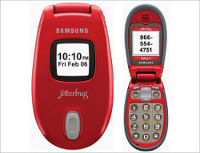Idea cellular has launched a mobile banking service called ‘Idea MyCash’, which is powered by Axis Bank to offer basic banking services including money transfer, using the mobile platform.
Axis bank and idea cellular has signed a MoU last December to offer financial products and services offered by the Bank through the mobile operator’s retail outlets.
Under this service idea cellular retailers will act as business correspondent of the Axis bank and will help the users open no frills bank account.
Users will also be able to deposit and withdraw money from their account through these retailers.
“Axis Bank in association with IDEA Cellular is offering a branchless banking solution that provides the elements of security, access and convenience in a cost effective manner. This association in a larger context enables the Bank to undertake financial inclusion by providing a host of financial inclusion products and services through the IDEA mobile platform and offered through select IDEA retail outlets” Shikha Sharma, managing director and chief operating officer of Axis Bank said.
“Idea MyCash, in association with Axis Bank, will ride on our deep rooted network to make banking services accessible to millions of Indians and include them in the economic development through financial inclusion” Sanjeev Aga, Managing Director, Idea Cellular commented.
Similar services have been launched by ICICI bank and SBI in partnership with operators like Vodafone and Airtel.



 The iBall Aasan might look like a funny little mobile phone but for senior people it is nothing short of a boon. Its extra large back-lit keys and large but simple display are very easy on the eye.
The iBall Aasan might look like a funny little mobile phone but for senior people it is nothing short of a boon. Its extra large back-lit keys and large but simple display are very easy on the eye. You might have not heard about this manufacturer but you will find its phones in the market soon. The D1201 is a small mobile phone but with a big keypad and a 1.7 inch display, for easy readability and operation.
You might have not heard about this manufacturer but you will find its phones in the market soon. The D1201 is a small mobile phone but with a big keypad and a 1.7 inch display, for easy readability and operation. Even though senior people like simplicity and prefer functionality over design, Samsung has dared to provide the first clam-shell cell phone for them.
Even though senior people like simplicity and prefer functionality over design, Samsung has dared to provide the first clam-shell cell phone for them.  When it comes to mobiles for seniors, all phones feature a big keypad and big character display. The major benefit of this phone is the emergency response feature, but in India you won’t be able to use it.
When it comes to mobiles for seniors, all phones feature a big keypad and big character display. The major benefit of this phone is the emergency response feature, but in India you won’t be able to use it.